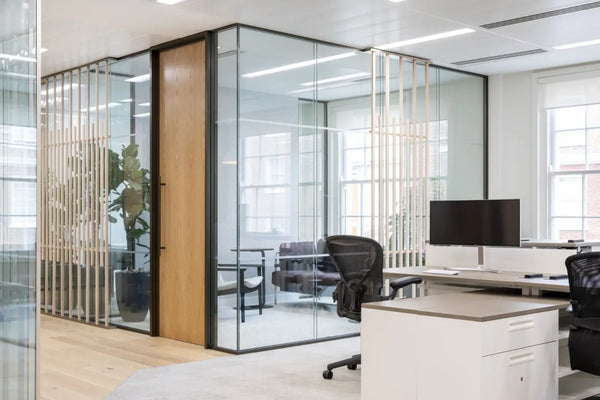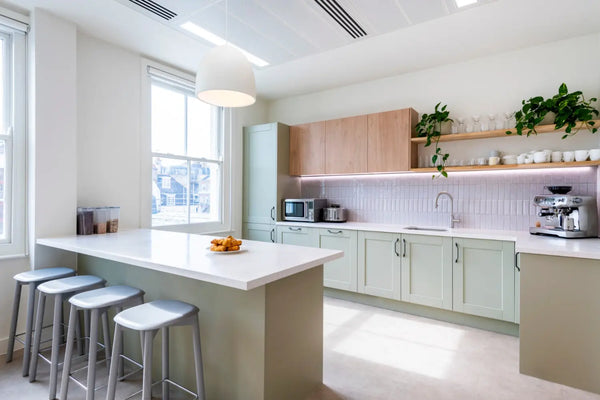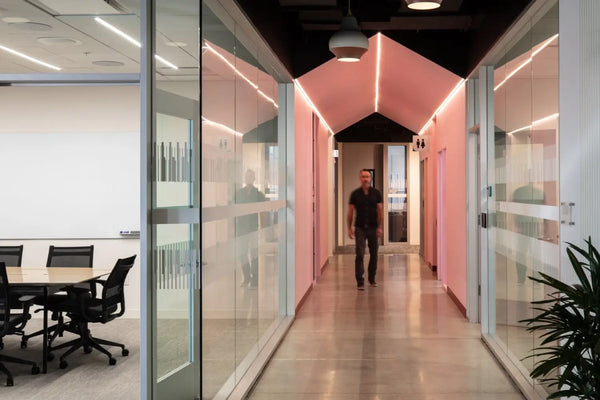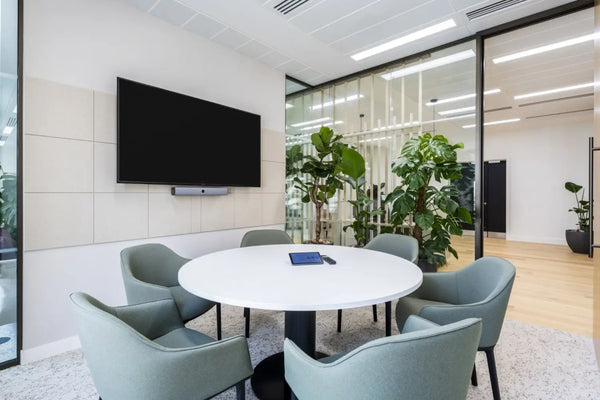Common errors at office design and how to avoid them
A poorly designed office can affect productivity and employee satisfaction and can harm the image of your company to customers or customers. Let's look at the most common design errors in office planning, tips for recognizing poor office designs and ideas for optimizing the workspace.
5 common mistakes when setting up your office
Whether employees work independently or organize multiple meetings every day, each office retail can affect the functionality. If you understand the common mistakes when designing offices, you can ensure that you create a useful workspace that supports your company, its values and its employees.
Here are five common mistakes that you should take into account when designing an office:
1. Insufficient lighting
Poor lighting can cause many problems for employees. Bright light can cause headache, while dimmer options can lead to tired eyes and increased sleepiness. Uncomfortable workplace settings can reduce focus and productivity when employees look for ways to circumvent pain and obstacles.
When setting up your office, lighting options can support office productivity and employee satisfaction. Natural light is best to promote eye comfort and to keep employees alert and to prepare for daily activities. You can also consider innovative lighting solutions, such as corrective lighting to help reduce tired eyes due to prolonged exposure to the screen.

2. Poor flow or layout
With a poor office furnishing, spaces have insufficient space to move through spaces. Offices often need several spaces, including workplaces, meeting rooms and pauper rooms. Because they have different functions, these zones must remain separate to promote higher productivity. Poor flow and layout provide more distraction when areas intersect - employees during their lunch break can, for example, be a source of distraction for employees on their workstations. The power and layout of the office must also be easy to navigate and arranged in a logical way.
How to set up workstations can also influence productivity and performance. Employees often need a mix of space for cooperation and personal space to be able to do different types of work. Open designs are great for cooperation and communication, but can distract when employees want to work independently. Some people love personal spaces, and open designs can make it a challenge to set those limits. That said, individual workstations can stand in the way of joint efforts and some employees may feel isolated.
By designing and designing your office that it is suitable for different work styles, preferences and types, you can optimize productivity and prevent a poor office design. Employees must be able to move quickly between spaces based on their workflow and tasks without hindering other areas.

3. Lack of storage
One of the most common pitfalls when designing an office is to forget your storage needs. From storage cupboards to personal archive cabinets, your office needs storage space to maintain the activities and prepare for unexplained events. In storage spaces and cupboards, furniture and equipment can be housed and employees can be provided with extra stocks if they run out or if something breaks.
Suitable storage spaces can ensure a professional, productive working environment. When your employees have access to archive cabinets, they can store essential documents for later use, so that their desks and workstations remain free of distracting junk, so that they can concentrate on the tasks that lie for them and can perform optimally.
Although Rommel can distract, it also evokes security risks. Cases or unorganized items that block paths can form stumbling and fire hazard, making it a challenge for employees to navigate safely through the office. Good storage solutions can ensure that they always have a place to store things, from personal items to work accessories.

4. Unprofessional receptions
Your reception area is the first impression that your visitors and partners get from your office. You want to pass on the correct information to represent your values and business. Comfortable and adequate seats ensure that they have room if necessary to wait while showing that you are accommodating. The decor must reflect the values and tone of your office so that guests can prepare themselves. The reception room needs enough space and storage space to access and to save it for an organized, neat reception area.
5. Uncomfortable Kantine rooms/break areas
The design of the break space is essential to support the productivity and focus of employees during the working day. For many employees, the break space is a place where they can rest, reduce stress and prepare them to resume their duties. It is also a space where they can make friends and eat.
To create a successful break space, you must take into account all possible functions and needs of employees. Comfortable furniture can offer employees a designated place to relax and have a chat, while tables and facilities can support healthy eating habits. Many companies offer small games or activities in break rooms to promote team binding and relationships.
How you can avoid common problems at office furnishing
Your actions during the planning and design phase can prevent these common errors. If you understand the steps you can take, this can help your purchasing and design teams to implement a stronger office.
Plan layout before implementation
Whether you add new furniture or change your workstation configuration, you can efficiently assess the flow by turning off your layout before making changes. These solutions help you visualize problems so that you can solve them in the planning phase instead of after installation and implementation.
Drawing floor plans and furniture options can help you find the right solution for your office, so that you are assured of the best electricity and space efficiency.
Take care of the comfort of the employee
If your employees feel comfortable, they can stay focused for longer, which increases productivity in the office. Investing in ergonomic furniture, soft fabrics and soothing colors help you bring comfort to your redesigned office spaces.
Visitors and partners will also benefit from comfortable furniture and rooms, so that they can adapt to your office and concentrate on their business with you and your employees.
Optimize flexibility and functionality
Flexibility can benefit many companies, especially when they work with smaller rooms or spaces. With flexible furniture and functions you can transform the office to meet the changing needs of your team.
For example, you can think of barriers between workstations to promote productive, independent work. Flexible solutions can be retractable walls, allowing employees to control their cooperation efforts.






